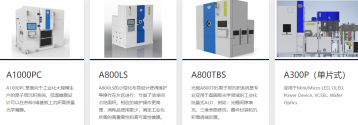Dynamic budget analysis of multiple parameters in a lithography system based on the superposition of light intensity fluctuations
Institute of Microelectronics of Chinese Academy of SciencesUniversity of Chinese Academy of Sciences
Guangdong Greater Bay Area Applied Research Institute of Integrated Circuit and Systems, Guangzhou
Abstract
Lithography is one of the most critical processes in the manufacturing of micro- and nano-devices. As device critical dimensions continue to shrink, variations in system parameters during the lithography process often result in heavy deviations from the intended targets, making control of these parameters crucial to ensure that lithography results meet process requirements. Gaining a thorough comprehension of how various parameters interact and contribute to lithography errors is significant, and it is equally important to offer precise suggestions for managing these parameters in extreme ultraviolet lithography (EUVL) scanners. This paper analyzes the key physical factors in the light source, illumination system and projection system of EUVL scanners and proposes what we believe to be a new methodology of budget analysis utilizing the superposition of light intensity fluctuations. Then the corresponding characteristics of light intensity fluctuations are analyzed when these parameters have fluctuated through theoretical formula derivation. A mapping model was established between parameter fluctuations and imaging outcomes through the distribution of light intensity. The yield requirements for critical dimension and pattern shift in EUVL are used to determine the exact budget range for each parameter in the proposed methodology. By controlling the parameters according to the budget analysis method proposed in this paper, the deviation between the experimental results from the yield requirements is no more than 0.1% in average. This approach allows for dynamic updating of the control range of relevant parameters based on their distinct characteristics to accommodate the unique fingerprints of various EUVL scanners. Furthermore, based on this adaptive budget range of multiple parameters, it can offer distinct direction for the development of lithography equipment or serve as a clear indication for parameter monitoring.

